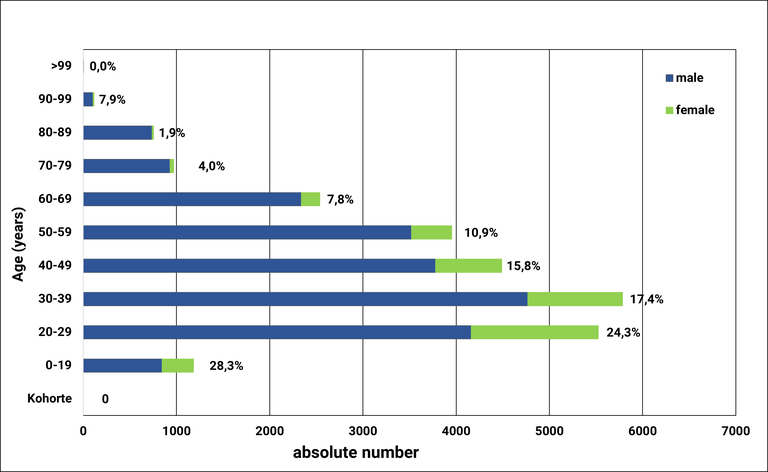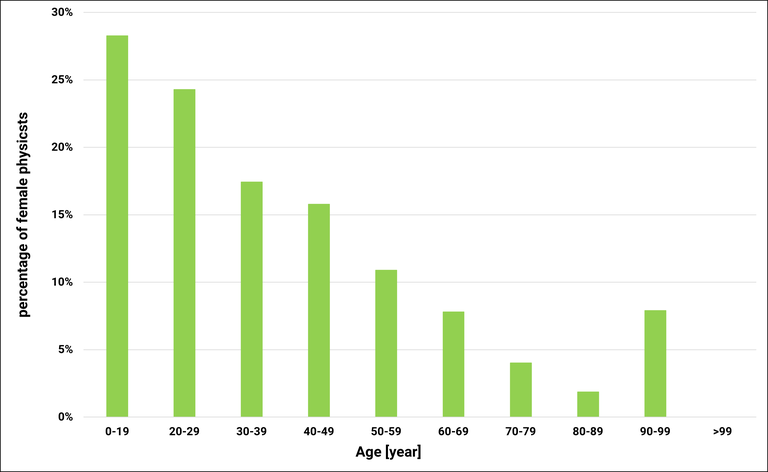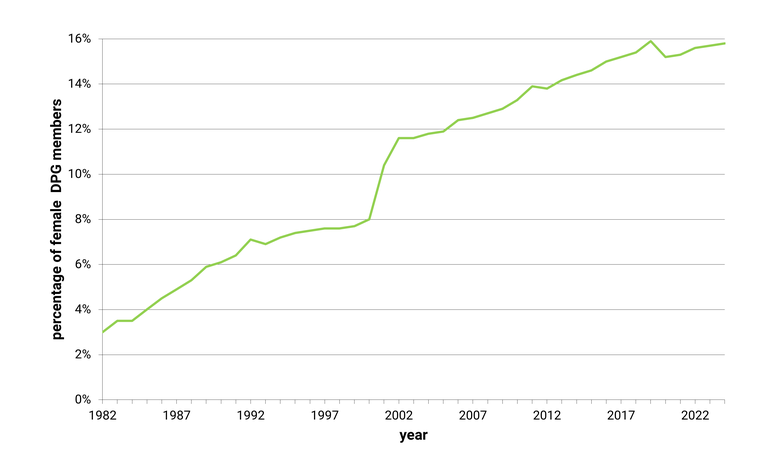Facts and figures
The DPG in facts and figures is updated annually and provides an insight into the structural and demographic structure of the DPG.
The DPG has got 50,668 members. 141 members are institutional members (institutes, libraries, schools, companies). The remaining members (99.7 %) are personal members. 9 % of the personal members live abroad. The portion of women is 16.2 %. The median of the age of the members is 39.5 years, the average 42,4 years.
Age Structure of DPG

In the chart, the age structure of DPG is shown. Because of the relatively low number of DPG members below 10 years service, the cohorts between 0-9 and 10-19 years are summed up. The share of male members is depicted in blue, whereas the female share is in green. Most DPG members are younger than 40 years old. In this segment, the share of female physicists is much higher than the total average.
Percentage of Female Physicists within the DPG per Cohort

The diagram shows the percentage of female physicists within DPG per cohort. Because of the relatively low number of DPG members below 10 years service, the cohorts 0-9 and 10-19 years are summed up. As expected, the percentage of female members decreases with increasing age. The female share within the group of members being less than 20 years old constitutes more than 25 percent, which exceeds the female share of physics first-year students.
Percentage of Female Physicists within DPG

The graph represents the development of the female share within DPG over time since 1982. While the percentage of female DPG members was in the range of just a few percent previously, the current share amounts to 15 percent due to constant growth. The sudden increase of more than 2 percent in the year 2001 correlates to the initiation of the DPG High School Prize.